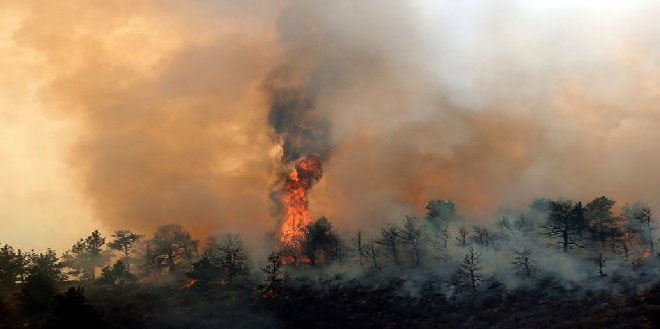Bobbie Klein’s work on Colorado Climate Change Vulnerability Study was highlighted in a Daily Camera article.
Study: Climate change could bring more disease, crop damage, fires to Colorado
State-commissioned study sees 2.5 to 5.5-degree temperature increase by mid-century
by Charlie Brennan
Daily Camera
February 4, 2015
Colorado could see more infectious disease, negative impacts on the elderly and people living in poverty, as well as stresses to water, cattle and crops as byproducts of future climate change, according to a comprehensive new report commissioned by the Colorado Energy Office.
“The important takeaway is, here’s what’s important to Colorado,” said Eric Gordon, co-lead editor of the 176-page report and managing director of the Western Water Assessment at the University of Colorado. “We’re not talking about things that have nothing to do with us, like sea level rise. This is what’s important to Colorado and what we should be worrying about.”
The exhaustive report includes chapters devoted to seven separate sectors where the state might show vulnerability to climate change — ecosystems, water, agriculture, energy, transportation, outdoor recreation and public health.
Dennis Ojima, co-lead editor of the report and a professor in the Ecosystem Science and Sustainability Department at Colorado State University, noted the degree to which each of those sectors can be seen as intertwined with the others.
For example, Ojima said, “In a warmer climate, we need more irrigation and more energy to support that, and more air conditioning in our area in the summer requires more energy, but also more water for cooling. These multiple constraints start occurring when you start looking at the whole state of the system.”
Among noteworthy findings of the report:
- Climate projections show that Colorado’s springtime mountain snowpack will likely decline by 2050, with potential impacts on late-season skiing. Spring runoff season may also be earlier and shorter, which could affect rafting.
- The state’s reservoirs can provide buffering against some expected increases in water demand and decreases in flow, but entities with junior rights or little storage are especially vulnerable to future low flows.
- Rising temperatures, heat waves and droughts can reduce crop yield and slow cattle weight gain. Colorado farmers and ranchers are already accustomed to large natural swings in weather and climate but may find it particularly hard to deal with expected changes in water resources.
- The report, presuming a conservative level of future greenhouse gas emissions, nevertheless forecasts a 2.5- to 5.5-degree increase in statewide temperatures by mid-century, relative to a 1971-2000 baseline. Also, Colorado will be more prone to extreme precipitation events in winter, but not necessarily during the summer.
The report states that impacts on public health are complex and hard to anticipate, but climbing temperatures may mean more frequent episodes of bad air quality and more common heatstroke, plague, West Nile virus and hantavirus.
Temperatures in Colorado have been rising, especially in summer, and that trend is expected to continue, along with increases in the frequency and intensity of heat waves and wildfire.
Even public schools in many Front Range cities are vulnerable to these changes, the report stated. Historically, schools in the state have not often required cooling, so many do not have air-conditioned classrooms.
Boulder County, in fact, is spending $37.7 million from a $576.5 million construction bond issue passed in November to provide air conditioning to eight schools that don’t have it (five of which hold summer sessions). Read more …


